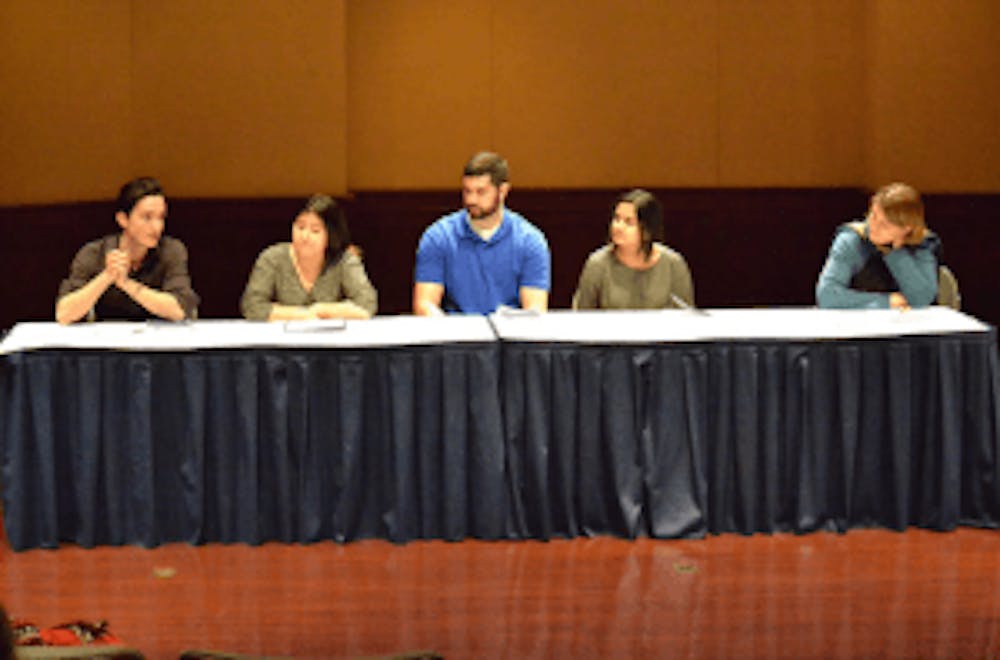By Melissa Natividade
Staff Writer
Discussing everything from the benefits to the shortcomings of rebuilding what nature tears down, the College’s sociology and anthropology departments hosted a student-reader’s panel on Tuesday, Feb. 9, with our very own sociology professor, Diane Bates. The purpose of the panel was to honor Bates’s recently published book, “Superstorm Sandy: The Inevitable Destruction and Reconstruction of the Jersey Shore.”
With over 40 people in attendance at the Library Auditorium, the discussion panel consisted of four sociology majors who were given the opportunity to read Bates’s book in advance. Each was then allowed to ask her a question addressing a particular issue discussed in the book. The student were all hand-chosen by Bates for their critical reading and interpretation skills in order to stimulate analytical feedback during the discussion.

At the conclusion of the student-reader’s discussion, questions were opened up to the audience, most of whom questioned how Bates would directly act as leader in times of natural disasters such as Sandy. Bates made her viewpoint on the issue crystal clear.
“We have to be realistic,” Bates said. “Even if you can afford rebuilding something you know is going to get destroyed, maybe you still shouldn’t.
“When a natural disaster like Sandy occurs, maybe we should see it as a good time to retreat from those places, despite economic incentives, that were never supposed to be commercialized in the first place,” she added. “If I were in power I would put it simply as ‘If something gets destroyed, it will not get rebuilt.’”
Superstorm Sandy was one of the most destructive hurricanes in all of American history, only falling short of Katrina. The main difference between these two natural disasters lies in how immediately the efforts to “Restore the Shore” began in comparison to the rebuilding efforts that followed Katrina. The waters had barely even receded from the Jersey Shore when cleanup, demolition and rebuilding started up — most of which occurred without anyone questioning whether rebuilding should even occur.
“The biggest issue for me is the concept of building the same exact way and expecting different results when it is clear that this storm is not an isolated case.” Bates said.
Contrary to the slogan “Stronger than the Storm,” Bates discussed how the artificial separation between urbanization and the environment is not a realistic way of addressing our impact on the environments. Humans are indeed a part of our own ecosystem, despite our ability to alter it.
As the students participating in the discussion were quick to address, what separates this book from other publications about Sandy is Bates’s unique sociological approach that take a unique and honest approach to our flawed relationship with nature, rather than masking it. Nevertheless, the book still regards the importance of human identity in regards to cultural iconography, such as the Jersey Shore.
In her book, Bates provides an explanation to this cultural connection to the Jersey Shore by invoking sociologist Kari Norgaard’s concept of double reality. According to Bates, the theory states that “people are deeply and emotionally connected to an environment that they know is intimately linked to insecurity.”
Despite regarding and understanding this human longing for that which we can’t have, the main takeaway Bates emphasized is that the desire to maintain what we know and like cannot trump that which is sustainable and necessary — a truly vital concept that she hopes the book’s intended audience, the current generation, can value and embrace.







